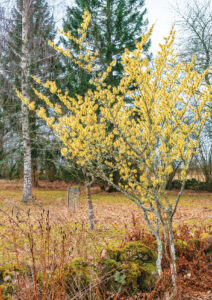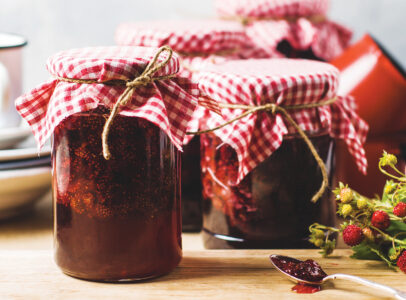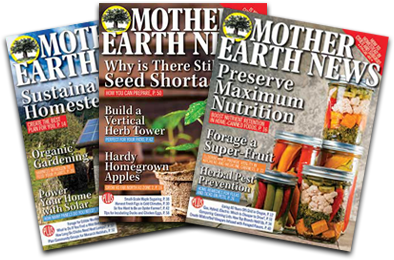Uses for witch hazel span the pollinator and human world. It’s a crucial food source for pollinators late in the year, and it’s approved for use as a base in skin care products.
Yes, you can grow this hardy, low-maintenance plant. Witch hazel doesn’t usually stand out in the landscape; it generally appears as a large deciduous shrub or small multi-trunk tree, up to about 20 feet tall, enjoying life as an understory plant most at home in partial shade to full sun. (Fall color and flowering will be best in full sun.)
The two major native species are eastern witch hazel (Hamamelis virginiana), whose range encompasses the entire eastern United States and Canada, and Ozark witch hazel (H. vernalis), whose range is the central United States, from Missouri and Oklahoma south to Arkansas and Texas.
Because witch hazel is one of the last native plants to flower (often blooming in late autumn or winter), it’s an important food source for pollinators at a time when other sources are scarce. Birds and small mammals eat the small fruit of the plant and its seeds, and the plant hosts numerous insects, which, in turn, are food for local birds.
As for humans, witch hazel is approved by the Food and Drug Administration for use in skin protection, specifically for minor skin irritations, scrapes, and hemorrhoids. As you’ve seen, it’s also used as a base for many personal-care products.
To use homegrown witch hazel, harvest leaves, small twigs, and branches from your plants. Cut leaves and twigs into small pieces, about 1 inch. For larger branches, strip the outer bark with a sharp knife and discard the woody part. Leaves, twigs, and outer bark can be used fresh or dried to use later.
To dry, place plant material on a screen in a well-ventilated location. Leaves can also be placed in a suspended mesh bag. Drying time will vary depending on the location and conditions; it usually takes 3 to 7 days. When leaves crumble in response to pressure, they’re ready. If they merely bend when you handle them, wait a bit longer. Likewise, twigs that bend to the touch aren’t yet ready; they should snap when you try to bend them. Once dry, store the material in paper bags, cardboard boxes, or something else that’s not airtight. Tightly sealed plastic or glass jars will encourage mold.
Profiting from witch hazel can take a few different forms.
- If you’re positioning your home nursery as a source of native species (or shade-tolerant plants), witch hazel could be a great addition to your list. You could propagate by seed, but a faster and easier way would be to purchase bareroot seedlings from a wholesale nursery.
- Because witch hazel is generally dried before use, it lends itself easily to selling as a product. If you have suitable land, plant witch hazel on your own acreage so you don’t have to forage from wild plants.
- If you have a more established business, you can make a variety of value-added products, such as skin toner. Start small, perhaps for home use, and check with local and state regulations about selling such products. Consider the value of liability insurance.
Originally published in the December 2025/January 2026 issue of MOTHER EARTH NEWS magazine and regularly vetted for accuracy.







